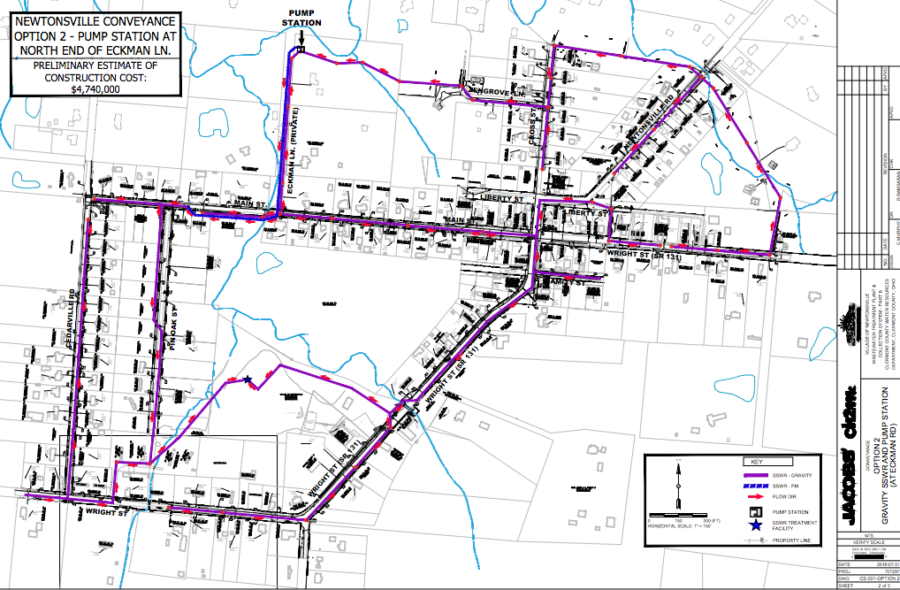
By Brett Milam
Editor
The village of Newtonsville may be dissolving, but its wastewater treatment plant and collection system is still moving along.
A new public hearing was held at Clermont Northeastern High School on Dec. 3 to discuss the project years in the making.
David Painter, president of the Board of County Commissioners, led the meeting, which was a forum to allow property owners to give their feedback in favor of, or in opposition to, the project by Dec. 10. By January, a resolution will be considered by the board on whether to move ahead with the project as it is or not.
Background on the project
On April 20, 2016, Newtonsville was given a grant by the U.S. Department of Agriculture to build a new wastewater collection and treatment system. The grant stems from the Rural Development Department’s Water and Environmental Program, where 60 projects in communities with fewer than 10,000 residents received $183 million in grants.
Newtonsville received a $2 million grant for the project, with five years to use the money.
The overall cost of the project when adding in construction, engineering, legal and administrative fees totals $12,391,610. The county also received $1 million from the Ohio Public Works Commission, with another $1.1 million from wastewater capital improvements funds to help fund the project.
And the need for a new system was illustrated in a 2011 survey, which found that 40 percent of the 171 systems in the village were in failure or risk of failing. There’s also the matter of water quality.
Robert Wildey, the director of water and waste for the county’s health district, has previously spoken about the challenges associated with maintaining the current septic systems.
The health district is strongly in favor of sewers being put into Newtonsville, Wildey said.
In April 2017, the district sampled two days consecutively 10 streams in and around Newtonsville, Wildey said. The sampling concerns E-coli: streams safe to touch should have a count of less than 235 E-coli, he said, while E-coli levels that exceed 1,030 is a “public health nuisance.”
From that sampling on April 25, five different areas within the village were designated as a health nuisance, with two greater than 24,000.
“That’s mostly sewage, that’s really what it is,” Wildey said.
The new system is designed to treat up to 57,000 gallons a day, according to Lyle Bloom, director of the Water Resources Department for the county. Bloom said currently existing homes and businesses in the project area use 34,000 gallons and the remaining 23,000 gallons can be used for future growth.
Or put another way, that’s an additional 100 single-family homes, Bloom said.
Where the project is in 2019, heading into 2020
Bloom said the Ohio Environmental Protection Agency sent a letter to the county on Nov. 22 confirming that a public health nuisance exists in the village, and are further ordering the county to install the sanitary sewer system.
The county has eight months to submit a permit to install application to the Ohio EPA. Within 24 months, construction must begin, and within 42 months, the county is required to complete construction.
Bloom said after the resolution in January, they would begin permitting and easement acquisition through May 2020. Requests would then go out in June 2020, with bid openings in August 2020. In October 2020, the construction bid would be awarded, with construction also started in that month.
Completion of construction should be February 2022, Bloom said.
A resident raised one question about how the dissolve issue would affect the project.
“The fact that village of Newtonsville did dissolve impacts the project in no way,” Bloom said. “The grants and loans associated with the project were issued to the county.”
